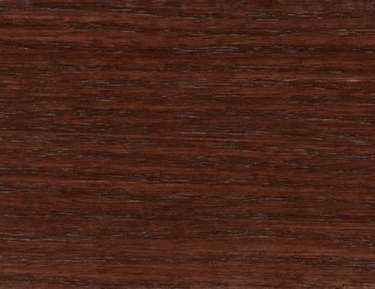Things You'll Need
150-grit aluminum oxide sandpaper
Trisodium phospate (TSP) cleaning solution
Stain-blocking primer
Paintbrush
Paint roller
Alkyd paint

Mahogany, cedar, redwood, walnut, maple and many other woods are rich in tannins. This acidic substance seeps from the wood's pores long after the tree is cut and turned into building lumber. If you cover a mahogany surface with paint, the tannins will gradually bleed through. Fortunately, the right painting procedure eliminates tannin discoloration for a bright, durable finish. With proper cleaning and priming, virtually anybody can paint mahogany wood with professional results.
Step 1
Sand the surface with 150-grit aluminum oxide sandpaper. The sandpaper will help remove gloss if the wood was previously finished, and it gets rid of surface imperfections on unfinished mahogany surfaces.
Video of the Day
Step 2
Clean the surface with a trisodium phosphate (TSP) cleaning solution. TSP will help reduce oily residue on stained woods or naturally oil woods for a cleaner, easily paintable surface. Additionally, the cleaning solution will get rid of all that pesky leftover sanding dust.
Step 3
Apply stain-blocking primer to the mahogany wood's surface. Use a paintbrush for tight corners, or a paint roller for larger areas. Stain-blocking primers eliminate bleeding as the wood ages. If you're painting the wood a dark color, consider getting a tinted stain-blocking primer. Tinted primers go on darker than traditional primers, allowing for adequate coverage in just one or two coats.
Step 4
Paint the mahogany with an alkyd paint of any color and sheen. If you're using a glossy sheen, use foam brushes and foam rollers. For eggshell or flat finishes, a regular brush and roller will work just fine.
Step 5
Apply a second coat of paint after the base coat dries. Wait a full 24 hours before using the freshly painted surface. Even though the paint will be dry in just a few hours, it's best to let it cure for a full day.
Video of the Day